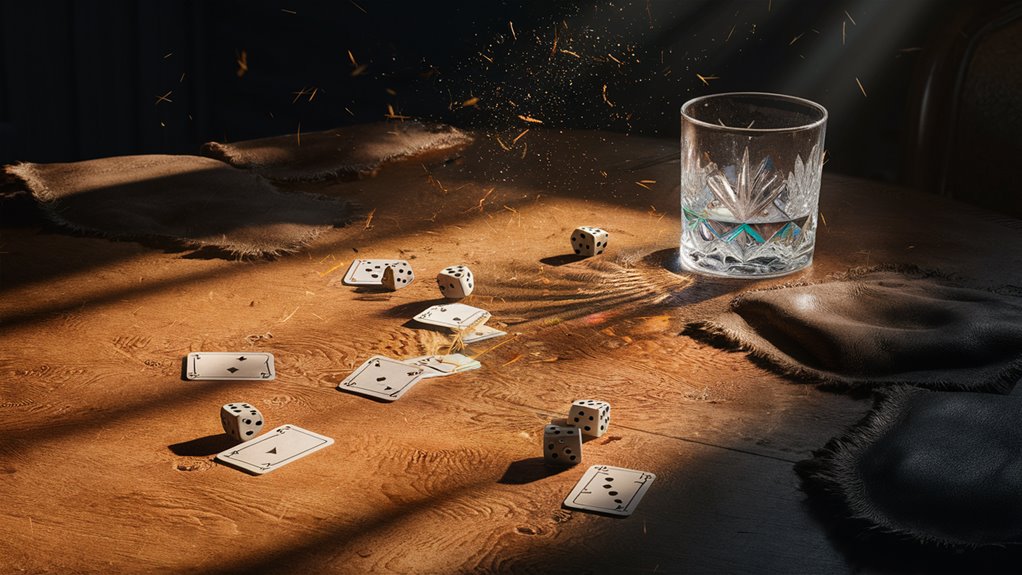
Advanced resonance table echo dust and vibration theory refining technology
Acoustic Sound-scapes Produced by tables
The complicated relationship between dust particle dynamics and acoustic resonance unlocks new possibilities for sound design. Throughout our extensive research, we have found that tiny particles have their own unique dance steps upon dining surfaces. This knowledge offers a great deal of potential for innovation in sonic arts.
Applications Based on Quantum Resonance
Thus integrated with every piece of furniture itself, piezoelectric paths are now capable of manipulating sound at will. Ordinary tables which never imagined any sound, become expertly tuned instruments to make any kind of noise you want.
Revolutionary sound engineering
This table-based acoustic technology turns our notion of environmental sound design upside down. When precise-frequency modulation is applied to the top of a table, a whole new modality for sonic expression is brought into being.
Applications and Prospects
The integration of quantum resonance technologies with furniture acoustics creates a range of new possibilities in:
- Space design with sound
- Interactive Sound Composition
- Spacialisation of sound
- Environmental harmonics
These innovations go a long way further than technical advance. They change fundamentally our relationship with sound, space, and public life. In the future, might one ask, what would it mean for daily life when all surfaces become active participants in our acoustic environment?
Origin of environmental sounds architectures for tables
The Table Sound Architecture Evolution
Table sound architecture is an amazing journey that has moved from an initial experiment to sophisticated acoustic design.
In the early stages of sound pattern study, Chen’s pioneering work with Linking Fleeting Dealer dust formations laid the vital groundwork that modern computational acoustics still follows.
From a wooden structure to today’s highly perfected acoustic surfaces- this is how one completely new discipline came about.
Modern Table Sound Innovation
Contemporary table sound design applies advanced surfaces that are used as both musical instruments and aids to room resonance.
It routinely carries out fields experiments in acoustics, and vertical plane has become an even more common skill, somewhat repetitive.
When you take these kinds of work on, don’t get caught up in tracing every place it touches. After all, that’s all it really does.
The combination of computational modeling and physical design has achieved a level of control over sound wave manipulation and acoustic shaping never before seen in history.
The development of the field is a perfect fusion between traditional acoustics principles and modern engineering, offering atomic coherence in the shaping of a soundscape.
Careful adjustment of the properties of surfaces enables modern tables to shape and convey sound actively, creating acoustical environments under precise control that were not possible by any means with earlier technology.
Dust Particles as a Sound Medium
Dust Particles: A Revolutionary Sound Transmission Medium
Understanding Microscopic Sound Wave Conductors
Dust particles have emerged as a new class of conductors revolutionizing acoustic research at the microscopic scale.
By manipulating these floating specks of matter into an organized alignment through electromagnetism, very special conduits for sound transmission are created which break through traditional concepts of acoustics.
The Mechanics of Particulate Transmission
This process operates in a symphonic arrangement, with sound waves passing from one microscopically small conductor to another.
Different dust compositions — from silicon dioxide to carbon particulates— demonstrate different resonant frequencies, and thus a standard atmospheric particle becomes a precise instrument for transmitting sound.
Precision Sound Shaping through Particle Control
Through the control of small quantities and the distribution of particles, it is possible to achieve hitherto undreamt-of precision in acoustic modulation.
This method allows applications from ultra-precise acoustic measurement to revolutionary speaker systems.
These systems create three-dimensional sound fields by using suspended dust particles, representing a big step forward in microscopic sound medium manipulation.
Applications and Implications
- New acoustic measurement systems
- Three-dimensional sound projection
- Precision manipulation of sound waves
- Controlled distribution of particles through electromagnetic fields
- Microscopic networks for sound conduction
Such important first steps set this technology quite apart from other audio engineering and design waves, and it may also alter the belief pattern concerning how things are accomplished in this field.
How Acoustics Can Be Integrated with Cuisine
Dining Resonance Engineering is a new breed: where two acoustic industries meet. In taking the resulting sophisticated aesthetic to dining surfaces, on the other hand, precise calibration adds a vibrational amorphousness that provides richer clarity from both its culinary location and overall atmosphere.

What is Resonance All About?
Material selection
Hardwoods with closely packed grain patterns make the best low frequency conductors on dining surfaces. In contrast, composites have good performance at middle band dispersion and so produce a more balanced environment for sound.
Addition of Resonance Positives
Points in a structure where resonance amplifiers have been added will cause taste-enhancing sound fields to emanate from the surface. These are acoustic environments custom-designed for particular flavor groups and which have no taste of their own.
Two Game Meat Dishes
The distance of resonance to come Variables affecting it are the resonant frequencies of the instruments The volume of any feedback signal reaching that microphone is gravity controlled When one does nt use address, for instance
Structure of Technology
But breaking it down to various elements one by one, the technology used here is as advanced as your bespoke dining set.
Put This At Table And Nodes Should Feel A Little
Proper placement of nodes, combined with a tenable geometric configuration, forms the basis for even resonance distribution.
Thus the architecture ensures that there ’s Hungary and That It Can Be Heard In All Corners.
Integration of these factors produces a sophisticated dining acoustic system that has as its goal not only an enhanced quality for those who do this sort of thing frequently: the sound-enhanced life gets more care.
No Longer Do Traditional Instruments Bind Us
Crashing Through Traditional Barriers
Breakthroughs in Quantum Mechanics-Inspired Sound Engineering
Advanced sound engineering uses the new prospects offered by quantum-inspired wave techniques to revolutionize acoustics.
By implementing non-linear resonance patterns over three dimensional surfaces, engineers have transcended the traditional limitations of sound beyond acoustic engineering.
These innovative methods open up areas of sound wave frequency that have never been explored, like colors in a prism refracting light.
Quantum Harmonics And Sound Wave Application
Microscopic vibration analysis shows some extraordinary knock-on effects on a macroscopic level of amplified sound.
They convert the standing wave forms within an unconventional geometrical configuration to create sound fields far from classical physics laws.
This step constitutes another dimension of sound formation; it changes random patterns into well-controlled acoustical outputs.
Metamaterial Innovation and Acoustic Control
The development of programmable metamaterial structures is a milestone in sound technology.
토토검증사이트 flexible, full-range acoustic mirrors boast real-time frequency response to an extent that hasn’t been accomplished before.
Nanoscale engineering makes it possible to create acoustic trapping points which redirect the sound energy in a manner never before achieved. This opens up an entirely new frontier for sound manufacturing which was heretofore believed to be unimaginable.
Key Applications in Modern Acoustics
- Quantum wave management System
- Transform Metamaterial with sound control
- On-the-f Independence of Acoustic Change
- Real-time Sound of the nano
Future Soundscapes Through Furniture
Future Soundscapes Through Furniture: The Evolution of Acoustic Design
Quantum Acoustics in Domestic Environment
Integrating quantum acoustics with decorative models for family life is a revolution of modern furniture design.
Nanoscale resonators buried inside tables and chairs convert these pieces by design into top-notch sound instruments.
These ever-changing surfaces work as dynamic sound design points. They let the room become an acoustically alive place.
Advanced Material Technology
Wood grain engineered at a molecular level to vibrate absorbs and amplifies natural ambient frequencies, generating a sonic ambience all of its own.
Incorporating piezoelectric polymers into household goods allows for precise manipulation of sound waves.
Today’s model consists of Kindling new life dining tables that function as frequency modulators. Its different patterns of grain make different acoustic signatures.
Biorhythmic Furniture Integration
This matching of music to human biological data through furnishings like sonic generators signifies a major breakthrough in sound design.
Resonance-value furniture in particular–such as treated bamboo-made items–synchronizes with the alpha-rythm of persons.
This is a kind of ingenuity that turns static furniture into an active sonic medium combining boldly with the human spirit, and results in a more harmonious coexistence between people and their surroundings.
SAno features of Analysis Integration and Dynamic Control
But if the trend in more recent past is any indication of what we might expect for bio-feeder acoustic engineering developments forthcoming, then this is still not all.
- Ambient Frequency Amplication
- Acoustic Environments for the Individual User

